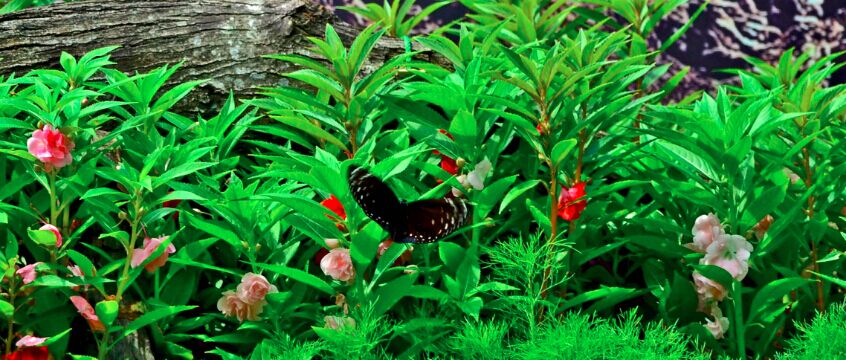Impatiens balsamina;Garden Balsam can be refereed to as henna, as they have the same basic chemical compounds as the plant that is used as dye. In the past, these red flowers were planted in Chinese people’s gardens, and their petals were mashed with rose and orchid petals to create nail polish, an unique folk cosmetic tradition during this time frame.
There are more than 200 wild impatiens species throughout China. Impatiens have a slim and fragile outline with varied shapes and are typically pink, carmine, reddish-orange, purple, white, and variegated flowers, and can be described as delicate as a phoenix, gorgeous as a fairy”.
Discovering impatiens in the wild is not extremely difficult. In the later half of the year, these wild flowers can be easily recognized with their butterfly shaped, soft and tender petals, and can be found in wetlands, near brooks, ditches, or even along the roads of villages. Wild impatiens have curved nectar spurs that contain a sugary-sweet solution that attracts vital pollinators such as bees.Once the insects are enticed, it is a snug fit for the pollinator to push to the nectar, and in the process the pollen is rubbed against their bodies. When the insect travels to another impatiens spur, pollination occurs.
Impatiens genus is the largest genus of this family, which contains more than 900 species. Most of those species are found in the mountains of tropics and subtropics in the old continent and in Africa, while some of them found in Asia, temperate zone of Europe and North America. In China there are more than 220 species that are mainly distributed in the northwest and southwest mountains,especially in Yunnan, Sichuan, Guizhou and Tibet. Nearly all the impatiens are uncultivated except Impatiens balsamina L. (also called Henna or garden balsam) which is wildly planted in Chinese folklore for admiring and medicine, I. wallerana Hook. t (also called glass jadeite)-a Sudan impatiens commonly planted recent years and I. usambarensis Grey-Wils-an introduction-cultivated Zambian impatiens.
















